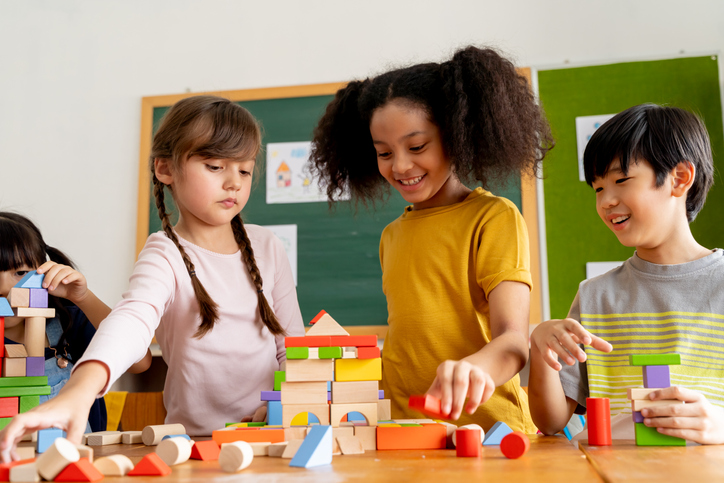![]() Decades of research confirm that play is essential for children’s healthy development. Play does everything from creating connections between neurons to sharpening socioemotional skills to fostering resilience from early childhood through adulthood.
Decades of research confirm that play is essential for children’s healthy development. Play does everything from creating connections between neurons to sharpening socioemotional skills to fostering resilience from early childhood through adulthood.
In schools, play-based techniques lead to social and academic gains, especially for very young learners. However, although many educators want to incorporate play-based approaches into their classrooms, it can be hard to know where to start. One place to start is with these frequently asked questions – their answers may give you a place to begin!
There’s already so much to cover! How do I incorporate play on top of what I already have to do?
Educators today face an incredible amount of pressure to cover a huge amount of material in a relatively short time. Add on the challenges of pandemic-era learning loss, and the idea of trying new ideas is even more daunting.
However, adding play to your classroom doesn’t have to mean changing your teaching style. Instead, you can work play into classroom management, systems, and routines. For example, try using a call-and-response rhyme or clapping game to get children’s attention. Ask students to create songs, dances, or hand movements to represent classroom rules. Teach students to take turns speaking by tossing or rolling a ball between them: whoever has the ball gets to speak. These are all examples of play that not only make your classroom run better but also provide children with the cognitive benefits of play-based learning!
Budgets are already so tight. What if I can’t afford new materials?
When we think of play, we often think of expensive curricula, board games, or even electronic devices. But play doesn’t have to cost a thing! You can play Simon Says to teach verbs as well as active listening and impulse control. You can ask students to stack and build with recyclables like paper towel rolls and cardboard boxes. You can play Mother May I to teach counting. When it comes to play, the possibilities are endless!
Won’t play disrupt my classroom?
Research proves that the opposite is true! Studies show that students in schools with recess tend to experience higher academic gains than schools without recess. Play improves children’s executive functioning skills, and has been linked with gains in math and critical thinking skills. The benefits of play are both confirmed and measurable.
I don’t have time or money for training. How do I figure out what to do?
There is no right or wrong way to play! Even if you don’t have formal training in play-based techniques, you can still create lessons using what you know, and your own creativity. If you are interested in learning more, you could check out free resources from organizations like The National Association for the Education of Young Children, UNICEF and the Lego Foundation for quick and easy ideas that you can implement immediately.
Free play feels like a waste of time. For play to be valuable, do I have to guide it constantly?
Again, there is no wrong way to play! Although there is plenty of research to suggest that guided play – which is play instigated, structured, and monitored by adults – can benefit kids, there is just as much research showing that free play benefits students as well. Even if you can only integrate play by including a few minutes of free play every day, you are doing your students a service.







